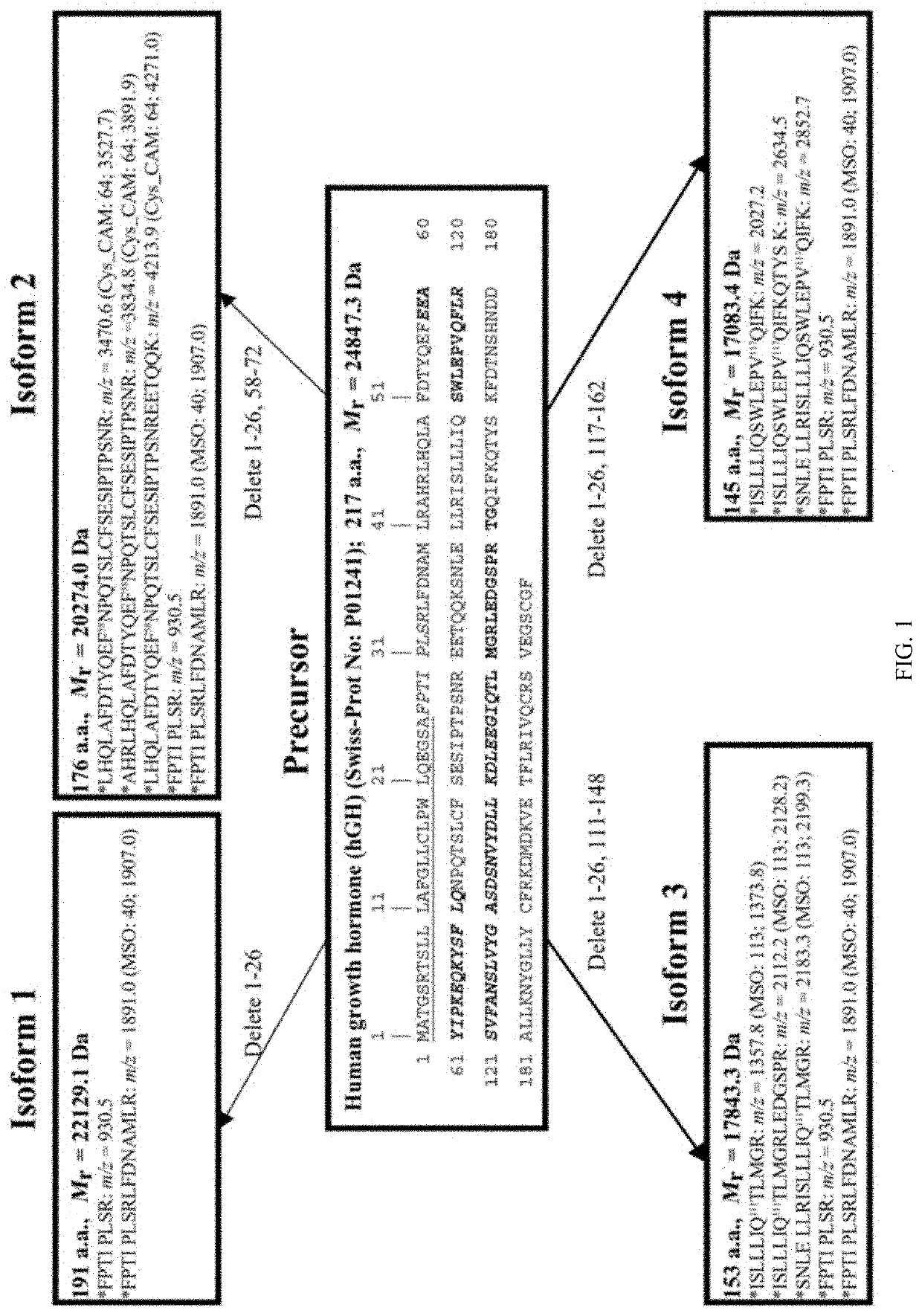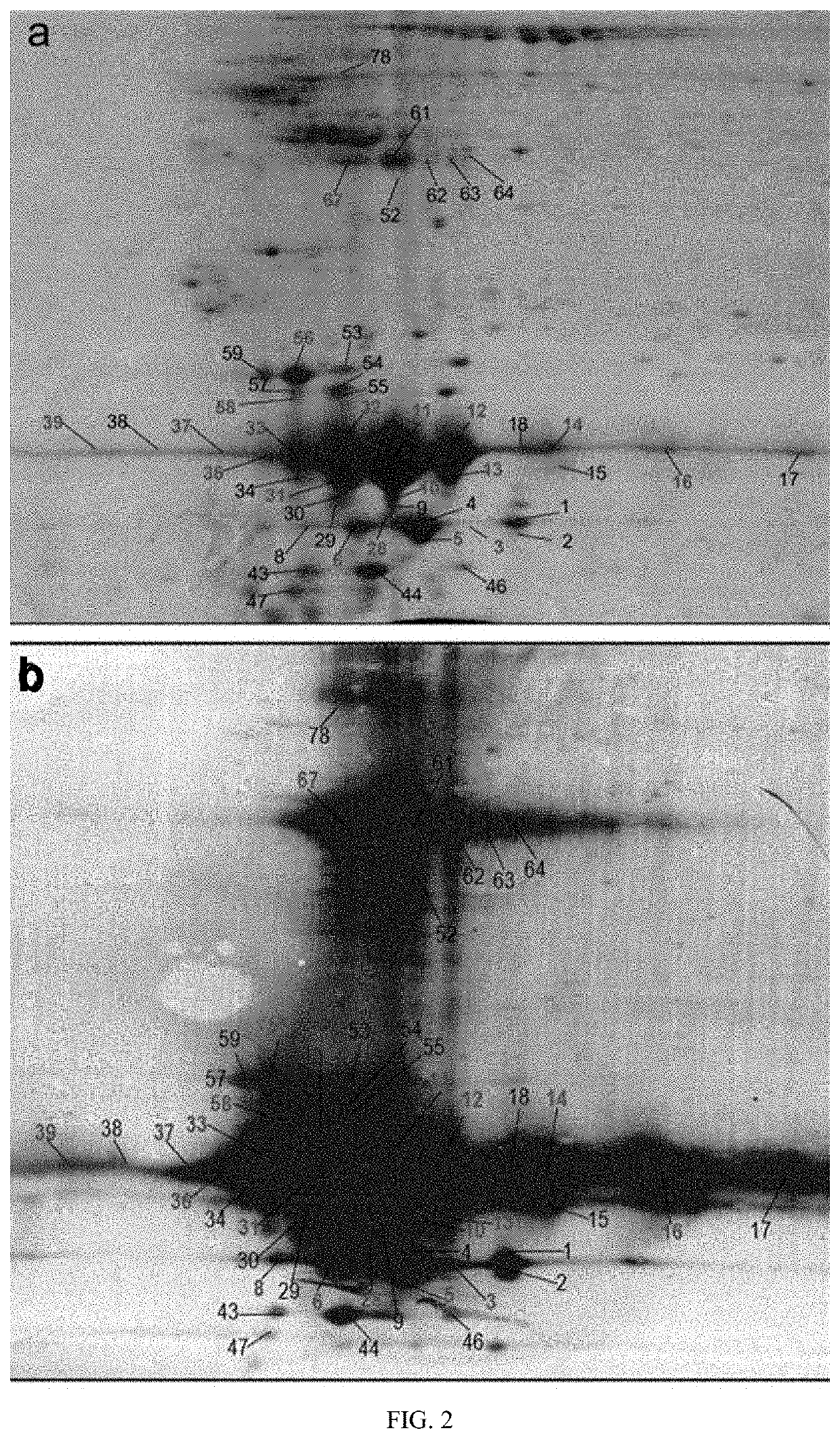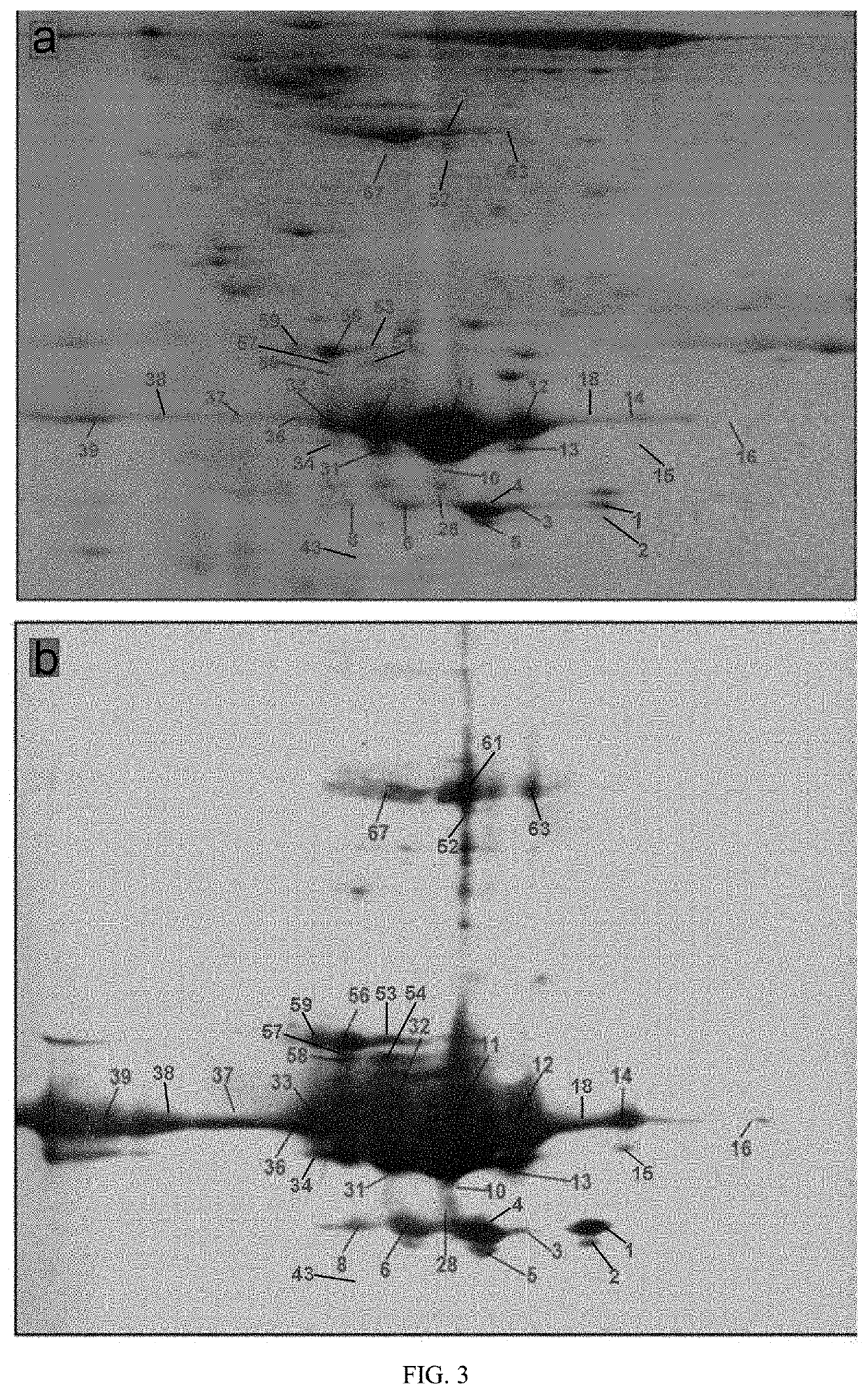Method for Identifying Human Growth Hormone Proteoform (hGHP) Pattern Biomarker
- Summary
- Abstract
- Description
- Claims
- Application Information
AI Technical Summary
Benefits of technology
Problems solved by technology
Method used
Image
Examples
example 1
[0027]A method for identifying an hGHP pattern biomarker was provided in this example, including:
[0028]S1. An hGH-secreting pituitary adenoma tissue sample and a normal pituitary tissue sample were collected, and the tissues were lysed separately to extract two sets of tissue proteins. A specific process was as follows:
[0029](1) Pituitary Tissue Samples:
[0030]All hGH-secreting pituitary adenoma tissue samples (n=7) in this example came from the Department of Neurosurgery, Xiangya Hospital, and were approved by the Medical Ethics Committee of Xiangya Hospital, Central South University. Normal pituitary tissue samples (n=7) as controls were obtained from the following sources: 4 cases came from the University of Tennessee Health Science Center, and were approved by the Ethical Institution Review Committee of the University of Tennessee Medical Center; and 3 cases came from the Department of Forensic Medicine, Tongji Medical College, Huazhong University of Science and Technology, and w...
PUM
 Login to View More
Login to View More Abstract
Description
Claims
Application Information
 Login to View More
Login to View More - R&D
- Intellectual Property
- Life Sciences
- Materials
- Tech Scout
- Unparalleled Data Quality
- Higher Quality Content
- 60% Fewer Hallucinations
Browse by: Latest US Patents, China's latest patents, Technical Efficacy Thesaurus, Application Domain, Technology Topic, Popular Technical Reports.
© 2025 PatSnap. All rights reserved.Legal|Privacy policy|Modern Slavery Act Transparency Statement|Sitemap|About US| Contact US: help@patsnap.com



